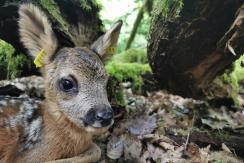Long-Term Monitoring
For many years, intense field activities have fueled the research work carried out within the Biometrics and Evolutionary Biology Laboratory (notably the Evolutionary Ecology Department). Today, our Lab is responsible for a number of medium- and long-term longitudinal studies of wild mammal and bird populations living in a variety of environments, such as forests or alpine habitats. These are carried out in close collaboration with local or national partners (National Parks, French Office for Biodiversity, etc.). Some fieldworks, such as those on ungulates, exist since the 1970s-80s and are among the world's longest-running vertebrate databases. However, the acquisition of these precious time series requires a considerable field effort every year, which must not be interrupted, and which involves the staff of the biotechnology platform. In animal ecology, individual animal monitoring is mainly based on the capture-recapture sampling method, which makes it possible to describe in detail the life histories of individuals, and to collect biological samples. These longitudinal data are then used to address a wide variety of important scientific questions in ecology and evolutionary biology, at different scales of biological organization (individual, population, community). Our monitoring activities provide a better understanding of the population dynamics of these species, their eco-epidemiology, behavior and eco-physiology, in the face of environmental variability or anthropogenic activities (hunting, road traffic, etc.). Such monitoring is also essential for understanding the consequences of global change on biodiversity, and provides the data to test the predictions expected from evolutionary ecology theory.


